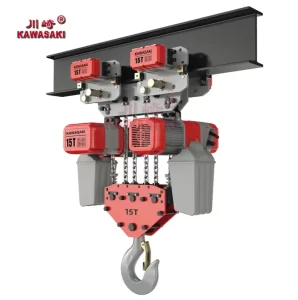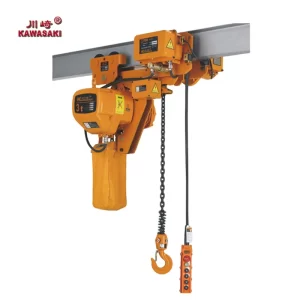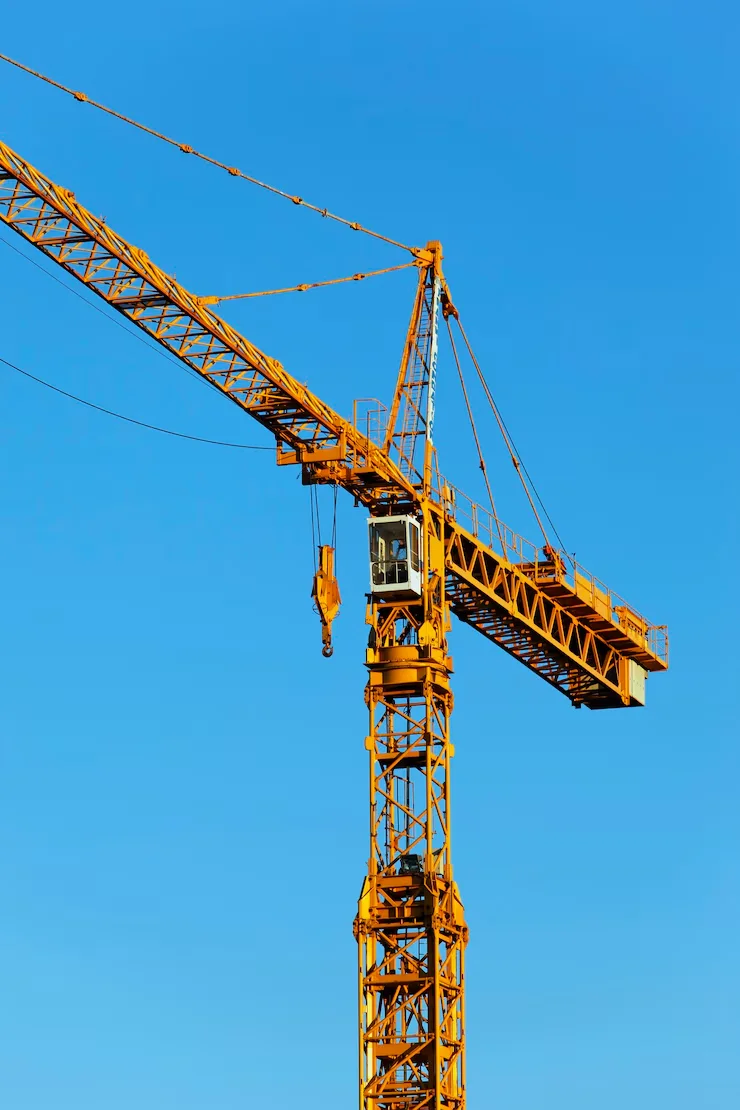Introduction
Electric hoists are vital lifting devices used in manufacturing, construction, warehousing, and logistics industries. They enable efficient and safe lifting of heavy loads, reducing manual effort while improving productivity. However, like all mechanical and electrical equipment, electric hoists require careful operation and regular maintenance to ensure reliability, safety, and long service life. Neglecting proper use or maintenance can lead to operational inefficiencies, equipment failure, or even catastrophic accidents. This essay explores the critical issues to be noted in the use and maintenance of electric hoists, including safety precautions, operational practices, environmental conditions, load handling, lubrication, electrical systems, inspection protocols, and compliance with standards.
1. Understanding Load Capacity and Working Load Limit
One of the foremost issues when using an electric hoist is ensuring that the load does not exceed the rated capacity or working load limit (WLL). Every hoist is designed to safely lift a specific maximum weight; exceeding this can lead to mechanical deformation, chain breakage, motor overload, or structural failure. Operators must always check the load weight before lifting and ensure that it is within the hoist’s rated range.
Overloading can also cause excessive strain on the motor and braking system, leading to overheating or reduced lifespan. For safe operation, users should apply a safety margin—for example, using a hoist at 80–90% of its rated capacity for continuous operations. Manufacturers often include load limiters or overload protection systems, but operators should not rely solely on these; proper judgment and load calculation are essential.
2. Correct Installation and Mounting
Electric hoists must be installed securely on appropriate structures or trolleys capable of supporting the total load, including the hoist’s own weight. Incorrect installation is a common cause of accidents. For instance, mounting on a weak or improperly aligned beam can result in bending, cracking, or detachment during lifting.
Key considerations during installation include:
-
Beam strength and compatibility with the hoist type and load.
-
Alignment of the hoist and trolley to ensure smooth horizontal movement.
-
Secure electrical connections with proper grounding to prevent shock hazards.
-
Accessibility for operation and maintenance without obstruction.
In many facilities, electric hoists are part of overhead crane systems. In such cases, alignment between the crane rails and the hoist’s travel path must be precise to prevent uneven wear and unsafe movement.
3. Safe Operating Procedures
Electric hoists must be operated by trained and authorized personnel who understand load control, lifting limits, and emergency protocols. Unsafe operation, such as jerking the load, side-pulling, or leaving a suspended load unattended, can cause accidents and mechanical damage.
Operators should observe the following key practices:
-
Check all controls before operation to ensure they respond correctly.
-
Lift the load vertically to prevent lateral strain on the hoist and beam.
-
Avoid rapid starts or stops, which can cause pendulum motion and stress.
-
Never use the hoist to drag or pull loads horizontally, unless specifically designed for that function.
-
Stay clear of the load path, and ensure no one is beneath a suspended load.
Emergency stop switches and limit controls must always be functional. In many industrial settings, operational errors such as “two-blocking” (when the hook or chain block contacts the hoist body) can damage the hoist mechanism. Therefore, upper and lower limit switches must be checked regularly to ensure they engage properly.
4. Electrical Safety and Power Supply Issues
Electric hoists depend on a stable power source to operate safely. Voltage fluctuations, poor wiring, or insufficient grounding can lead to erratic motor performance, overheating, or electrical hazards. Common electrical issues include short circuits, faulty insulation, or worn connectors.
To prevent electrical failures:
-
Use the rated voltage and frequency specified by the manufacturer.
-
Install circuit breakers or fuses to protect against overloads.
-
Ensure proper earthing of the hoist frame.
-
Routinely inspect cables for cuts, abrasions, or exposed wires.
-
Avoid operating the hoist in wet or highly conductive environments unless the equipment is specifically designed for it (e.g., IP-rated enclosures).
Electric hoists should also have emergency power cut-off systems, allowing immediate disconnection in case of malfunction or shock risk.
5. Environmental and Operating Conditions
Environmental factors can significantly affect hoist performance and longevity. Excessive dust, humidity, heat, or corrosive chemicals may damage electrical insulation, bearings, or metal surfaces. For instance, hoists used in marine or chemical plants require corrosion-resistant finishes and sealed enclosures.
Temperature extremes also pose challenges:
-
High temperatures can degrade lubricants and insulation, leading to overheating.
-
Low temperatures can cause lubrication thickening and chain stiffness.
Operators should therefore ensure the hoist’s operating temperature range matches the environmental conditions. Protective covers, enclosures, or climate control measures may be necessary in harsh environments.
6. Chain or Wire Rope Care
The chain or wire rope is a critical load-bearing component of an electric hoist. Damage, wear, or corrosion can lead to sudden failure. Regular inspection is essential to identify signs of elongation, cracks, kinks, or corrosion.
For chain-type hoists, look for:
-
Chain elongation beyond manufacturer limits.
-
Deformation or twisting of links.
-
Improper lubrication leading to stiffness.
For wire rope hoists, check for:
-
Broken or frayed strands.
-
Flattening or birdcaging (when strands loosen).
-
Corrosion or rust.
Both types require cleaning and lubrication to minimize friction and prevent rust. Only lubricants recommended by the manufacturer should be used, as improper oils may attract dust or damage seals.
7. Lubrication and Mechanical Maintenance
Proper lubrication ensures smooth gear and bearing movement, reducing friction and wear. Electric hoists often include gearboxes, bearings, and guide rollers that require periodic lubrication according to manufacturer schedules.
Over-lubrication should be avoided as it may cause leakage or attract dust. Conversely, inadequate lubrication leads to increased noise, vibration, and accelerated component wear. Maintenance personnel should use the specified grade of grease or oil and apply it at designated points.
Additionally, brakes and clutches—critical safety mechanisms—require inspection for wear, oil contamination, and response time. Brake linings should be kept dry and free from grease to ensure effective load holding.
8. Regular Inspection and Preventive Maintenance
Routine inspection is vital to detect early signs of deterioration or malfunction. Hoist inspections are typically categorized as:
-
Daily checks by operators (visual and functional).
-
Monthly inspections for mechanical and electrical components.
-
Annual comprehensive inspections by certified technicians.
Key inspection points include:
-
Hook deformation or cracks.
-
Chain/wire rope condition.
-
Brake and limit switch function.
-
Gearbox oil levels.
-
Motor noise and vibration.
-
Electrical insulation resistance.
Records of inspections and maintenance should be systematically logged to track performance and compliance with safety regulations. Predictive maintenance—using vibration analysis, thermal imaging, or current monitoring—can further enhance reliability by detecting faults before failure occurs.
9. Brake System Maintenance
The electromagnetic or mechanical brake in an electric hoist prevents the load from falling when power is cut off. Over time, brake pads wear or lose friction capacity. Failure to maintain the brake can result in uncontrolled load descent—one of the most dangerous hazards.
Maintenance should involve:
-
Checking brake response delay.
-
Inspecting wear on friction discs or linings.
-
Ensuring no oil contamination.
-
Adjusting brake spring tension as specified.
It is also advisable to conduct load-holding tests periodically to verify the brake’s performance under actual working conditions.
10. Control System and Limit Switches
Electric hoists rely on control systems (pendant control, radio remote, or automated controllers) to operate precisely. Faulty switches, damaged buttons, or signal interference can lead to accidental starts or stops. Regular inspection ensures responsive and accurate control.
Limit switches prevent over-travel of the hook by cutting off power at the upper and lower limits. These should be tested frequently to confirm they stop movement correctly without causing abrupt impact. Malfunctioning limit switches can result in mechanical collision and serious damage to the hoist structure.
11. Storage and Idle Period Maintenance
When electric hoists are not in use for extended periods, proper storage prevents deterioration. The hoist should be stored in a dry, clean, and covered area, with all metal parts lightly oiled to prevent corrosion.
Before reusing an idle hoist:
-
Conduct a full functional test.
-
Re-lubricate moving parts.
-
Inspect electrical connections for oxidation.
-
Run the motor at no load to ensure smooth operation.
This preventive care ensures readiness and avoids failures upon reactivation.
12. Compliance with Standards and Legal Requirements
Electric hoists must comply with national and international standards, such as ISO, ASME B30.16, EN 14492, or local occupational safety regulations. Compliance ensures that design, operation, and maintenance practices meet safety benchmarks. Employers are responsible for providing training, inspection, and record-keeping to meet legal requirements.
Failure to comply can result not only in accidents but also in legal liabilities, insurance issues, and downtime losses. Therefore, organizations should establish a maintenance management system aligned with recognized standards and guidelines.
13. Training and Human Factors
Even the most advanced electric hoist can become unsafe in untrained hands. Operators should receive comprehensive instruction on:
-
Equipment specifications and limitations.
-
Safe lifting techniques.
-
Emergency response and signaling.
-
Routine inspection methods.
Periodic refresher training is essential to prevent complacency. Human error, such as misunderstanding load ratings or ignoring warning signs, remains a major cause of hoist-related accidents.
14. Common Mistakes to Avoid
Some frequent mistakes observed in electric hoist use and maintenance include:
-
Operating with a damaged hook or chain.
-
Ignoring unusual noises, vibration, or overheating.
-
Using non-genuine spare parts.
-
Failing to disconnect power before maintenance.
-
Allowing unauthorized modifications to the hoist structure or control system.
Such practices undermine safety and reliability. A culture of discipline, documentation, and responsibility should be fostered among maintenance and operations personnel.
Conclusion
Electric hoists play a vital role in modern industry by enabling efficient material handling, reducing human effort, and enhancing productivity. However, their safe and effective operation depends on strict adherence to proper use and maintenance practices. Critical issues include respecting load limits, ensuring correct installation, maintaining electrical and mechanical components, lubricating and inspecting regularly, and training operators thoroughly.
Preventive maintenance, supported by a structured inspection regime and compliance with safety standards, not only minimizes downtime but also safeguards workers and equipment. In essence, attention to these issues transforms the electric hoist from a potential hazard into a dependable tool for industrial safety and efficiency.

